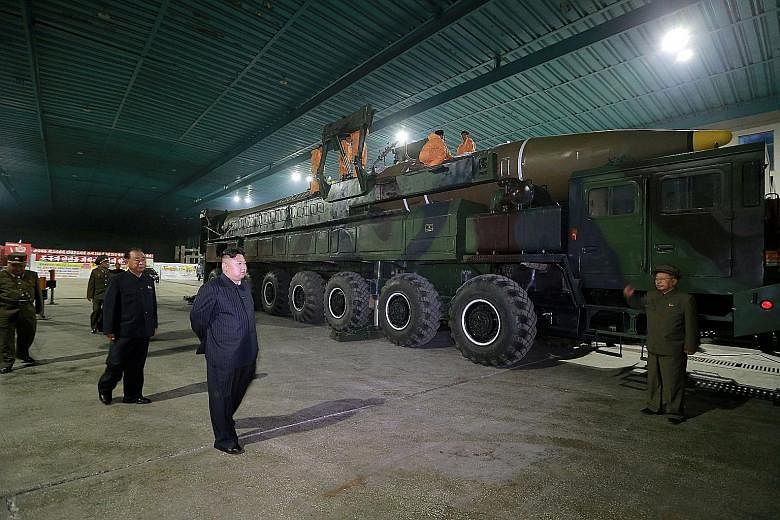WASHINGTON • A Bill signed by President Donald Trump on Monday asks the Pentagon to pursue more options for defeating US-bound North Korean missiles by using radar and more missiles to spot and shoot down inbound threats.
The National Defence Authorisation Act gives the Pentagon US$716 billion (S$984 billion), with almost US$10 billion going to the Missile Defence Agency (MDA) to fund the expansion of missile defences, emphasising the need to stop any North Korean or Iranian attacks.
The military is already exploring whether the United States can add another layer of defences to those already in place for intercepting incoming missiles in flight, Mr Keith Englander, the MDA's director for engineering, said at the Space and Missile Defence Symposium in Huntsville, Alabama, last week.
The MDA's head, Lieutenant General Samuel Greaves, has said he wants to integrate the Aegis Combat System into the current intercontinental ballistic missile (ICBM) defences of the US homeland.
The Aegis system, mainly found on ships, could be fitted with the Standard Missile 3 Block IIA (SM-3 IIA) interceptors that are being developed in a joint venture between Raytheon and Japan's Mitsubishi Heavy Industries.
The Lockheed Martin-made Aegis system is currently deployed aboard 36 US Navy ships. If given the new mission, the ships could patrol the Pacific Ocean and augment the network of Ground-based Midcourse Defence interceptor missiles in Alaska and California that protect the nation from ICBM attacks.
This is one of several avenues the Pentagon is studying to knock down inbound missiles. These include shooting the missile down soon after takeoff, stopping it in space as it flies above the Earth's atmosphere, and killing it soon after it re-enters the atmosphere before hitting its target.
Concern about US missile defences has grown with the escalating threat from North Korea. Last year, North Korea conducted about a dozen missile tests, including the launch of a suspected ICBM that could hit the US mainland.
REUTERS

